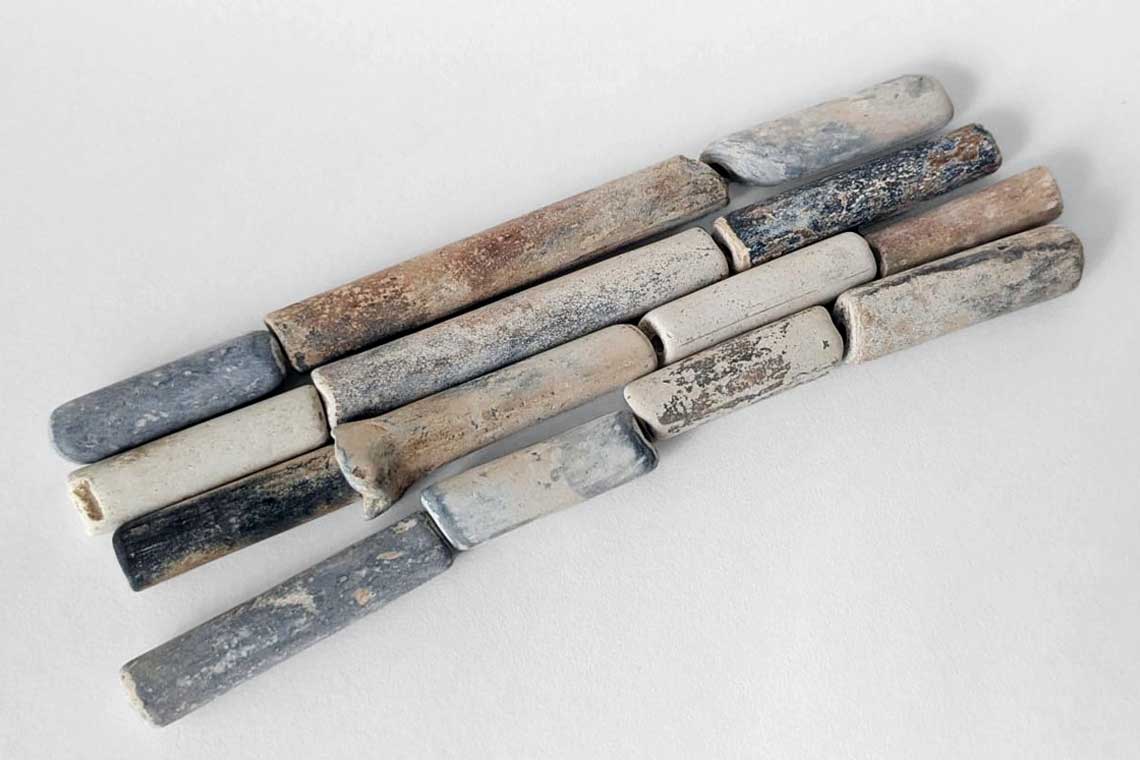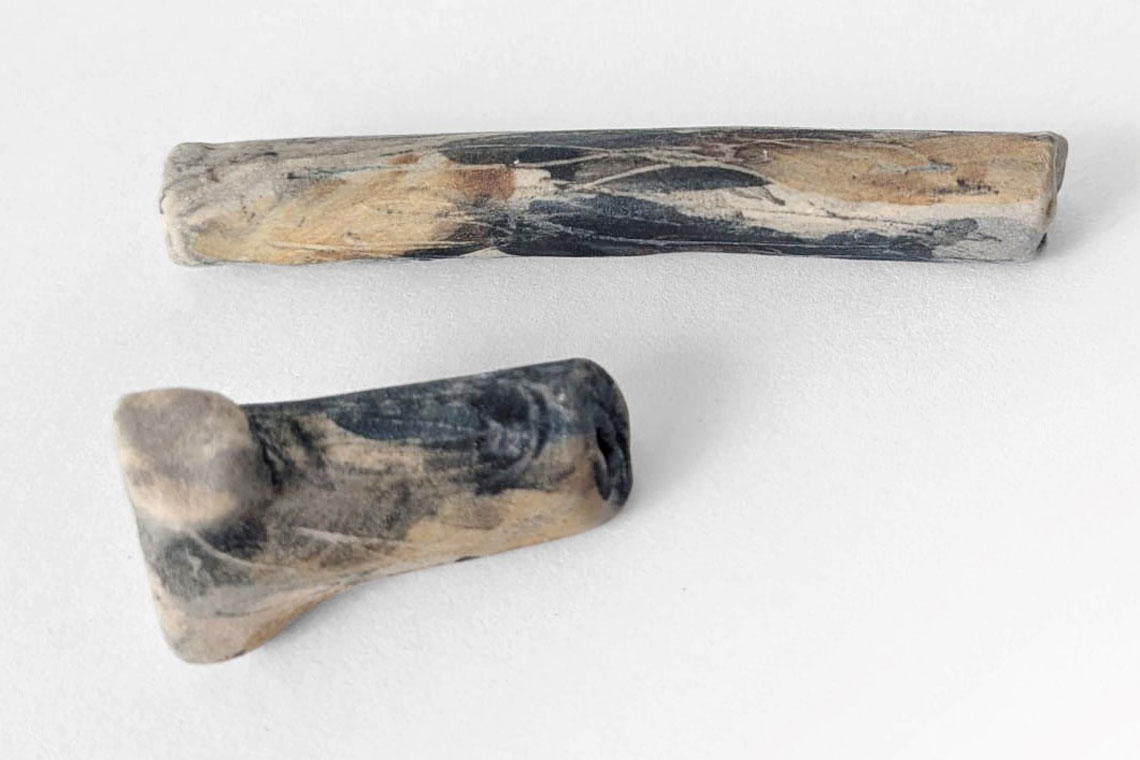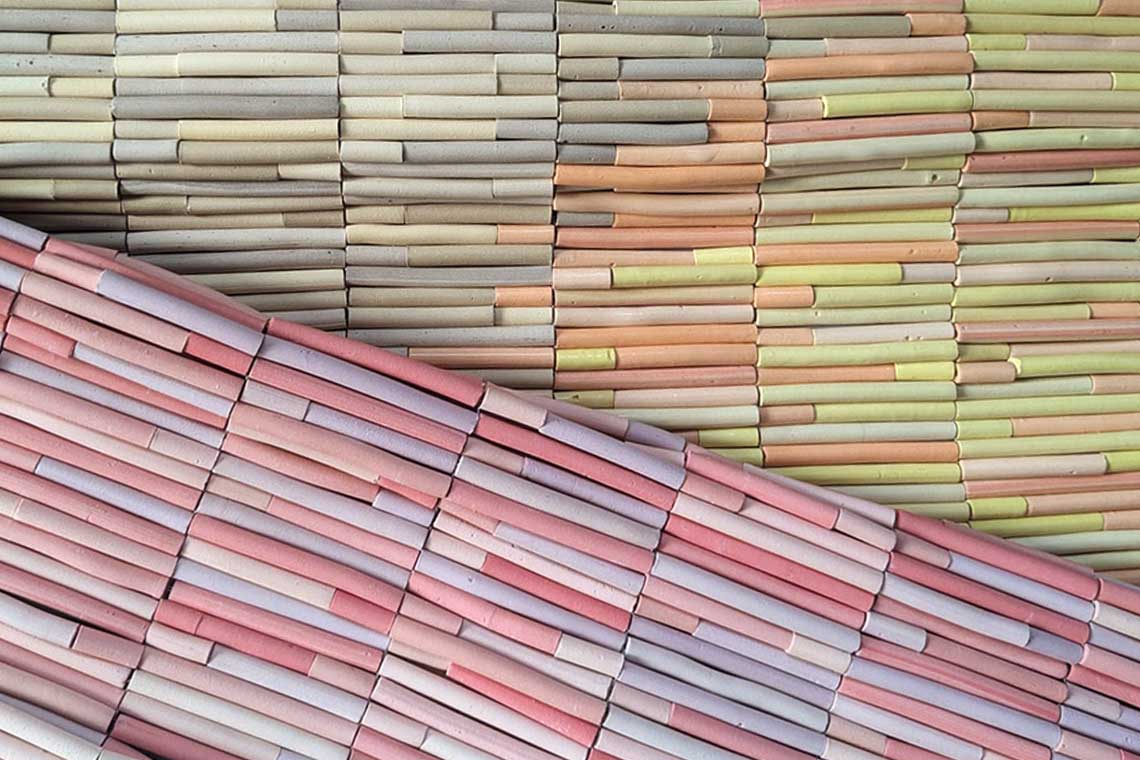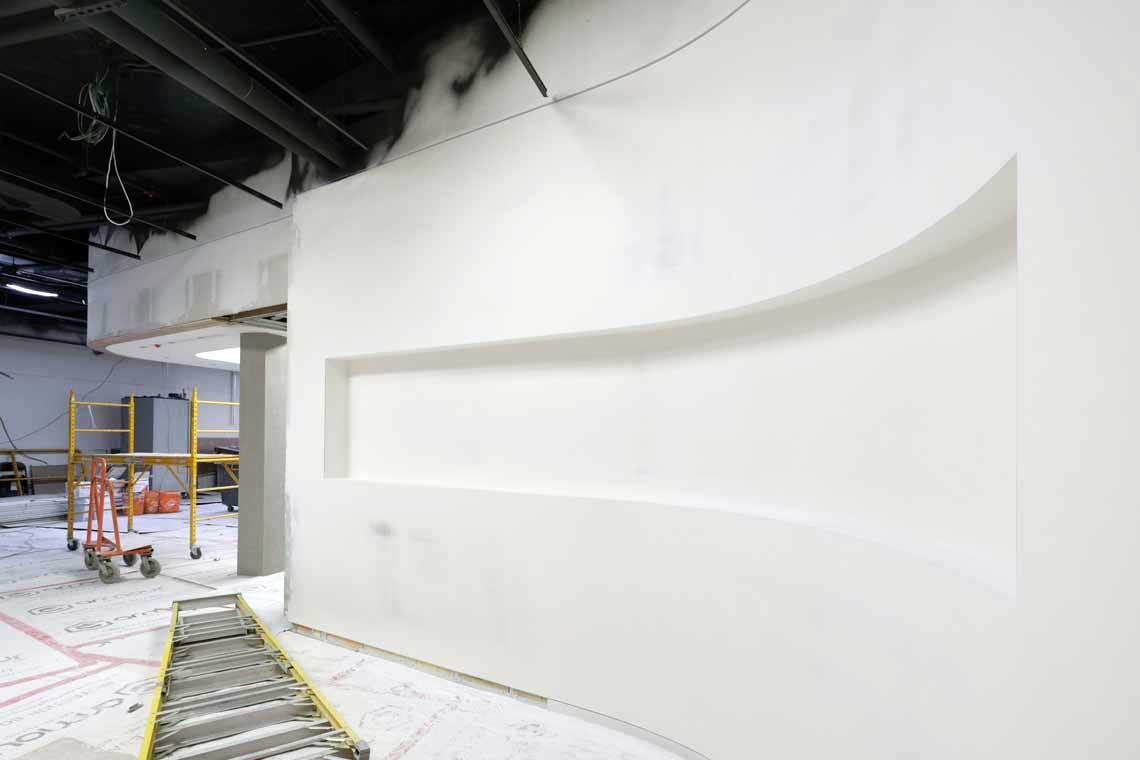Announcing a New Commission by Artist Nadia Myre
As part of the Gardiner Museum’s transformation—a once-in-a-generation reimagining of our 9,000-square-foot ground floor—we’re also debuting a major new commission by acclaimed artist Nadia Myre. Her installation will be the first thing visitors encounter when entering the Museum, setting the tone for a renewed space centered on connection, creativity, and Indigeneity.
A member of the Kitigan Zibi Anishinabeg First Nation, Myre is internationally recognized for her multidisciplinary practice exploring themes of belonging, resilience, memory, and the politics of recognition. Her work has been exhibited worldwide and is held in major public collections across Canada and beyond.
We spoke to Myre about the inspiration behind the commission, which draws on archaeological fragments to explore cultural memory and exchange. She shared how the work reimagines her bead practice at an ambitious new scale, and how she hopes it sparks a sense of familiarity, reflection, and dialogue the moment visitors enter the Museum.
This commission is generously supported by The Sabourin Family Foundation.
What is the inspiration behind this piece?
I was thinking of a couple of things. First, connection—connecting history—but also innovation through the medium of ceramic.
On the historical side, the work is deeply inspired by clay pipe shards I found in the River Thames in London many years ago. The pipe pieces bring up transcultural exchange: the import and export of tobacco, which also led to other forms of trade. This enterprise made the Scots very wealthy but is also part of what built Canada.
There is also an archaeological aspect to the work. When archaeological discoveries are made, they are often fragmented, requiring us to apply context to understand them. The characteristics of beaded weaving, as seen in this piece, are also fragmented and similarly require the viewer to add context.
On the innovation side, I really wanted to expand my bead practice. Finding those tobacco clay pipe shards and substituting them as beads allowed me to explore size, shape, and texture in new ways, taking the pipe shards out of the trade context, but still intermingling that very rich discourse around culture and cultural exchange.
Repurposed clay pipe shards function as beads. Photos: Courtesy of the artist
What can you tell us about the materials and colour palette?
I’m using a mix of found pieces incorporated with ceramic pieces made of clay. There’s a lot of exploration with colour in the piece. I wanted it to feel like part of the geography in some way. The palette is inspired by the Canadian Shield, so the colours will start in a register of muted beige, gold, and warm tones, and evolve throughout the piece to become more saturated.
The colours of the piece are inspired by geological formations. Photo: Courtesy of the artist
How do you feel about your commission being the first thing people will see when they enter the Gardiner?
I’m excited for it! I’m still working out the design, but I want to blend old and new. It’s going to be the longest beadwork I’ve done, so that is another exciting aspect of the installation. This piece is beading at a whole different scale.
A niche at the entrance to the ground floor will house Myre’s commission. Photo: Salina Kassam
Your work often engages with the theme of “belonging.” Does that form part of your message to visitors as they enter the Museum? Do you feel that creating a sense of belonging is important in a museum context?
Yes, I do. I think that’s why it’s important to have those found pieces in the work—the pipe shards—that are familiar, even though we don’t necessarily know what they are. Are they bones? Organic? Human-made? This speaks to a larger belonging of culture, belonging to histories, even though those histories are often entwined and not easy.
As far as the museum context, I think that it gives room for multiplicity: a museum houses many points of view from many different cultures and times in the same space. It invites different contextualization and dialogues. The piece could look like it’s something historic, but it’s not. It could fit with different cultures, even if it doesn’t actually come from them. But those connections would be more difficult to notice were it not in this context of multiplicity.
What do you want visitors to experience or understand when they encounter the work?
I’d like visitors to feel a sense of familiarity when encountering the work, like they’re looking at something they’ve seen before, something they know but cannot quite put their finger on. I’m interested in the in-between space of thinking that you know what the piece is but you’re not entirely sure, and being perhaps surprised by what you’re looking at.
About the Artist
Nadia Myre is a contemporary visual artist whose multi-disciplinary practice explores the structures of power that shape personal and collective narratives, crafting spaces for reflection on memory, ancestral connections, and the shared fragility of the human experience. Her art resonates deeply, sparking dialogues that bridge history, materiality, and the poetics of storytelling.
A graduate of Camosun College (1995), Emily Carr University of Art and Design (1997), and Concordia University, where she earned a Master’s degree in Visual Arts (2002), Myre has built a celebrated career spanning over two decades. Her work has been exhibited extensively in North America and internationally in the UK, France, Italy, Greece, Mexico, Gabon, and China. Her art resides in prestigious collections, including the Gardiner Museum, the National Gallery of Canada, the Smithsonian Institution, the Montreal Museum of Fine Arts, the Canadian Museum of History, and the Kadist Foundation, as well as in Canadian embassies in New York, London, Paris, and Greece.
Her contributions to contemporary art have earned her numerous accolades, including the Emily Award (2024), Fellowship in the Royal Society of Canada (2023), the Prix Louis-Comtois (2021), and the Sobey Art Award for Canadian artists under 40 (2014). Myre was also named a Compagne du Conseil des arts et des lettres du Québec in 2019, further cementing her status as a leading voice in Canadian and international art.
Through her evocative practice, Nadia Myre continues to craft spaces for dialogue and reflection, confronting the complexities of belonging, memory, and the intersections of personal and collective histories.
Help us realize this transformational project!
Donate now to From the Ground Up
Our Supporters
The Gardiner’s Ground Floor Transformation was catalyzed by a $9-million gift from the Radlett Foundation, in honour of William B.G. Humphries. The Gardiner gratefully acknowledges Leadership Gifts from The Hilary and Galen Weston Foundation and the Lindy Green Family Foundation, and support from the Government of Canada through the Department of Canadian Heritage’s Canada Cultural Spaces Fund.
The Gardiner Museum would also like to acknowledge the invaluable contributions of the Indigenous Advisory Circle in guiding this project—Mary Anne Barkhouse, Kent Monkman, Andre Morriseau, Duke Redbird, and Tekaronhiáhkhwa / Santee Smith—and welcome new members Bonnie Devine and Frank Shebageget.
Land Acknowledgement
The Gardiner Museum is situated on the ancestral and traditional territories of many nations, including the Anishnabeg, the Chippewa, the Haudenosaunee, and the Wendat peoples, and is covered by Treaty 13 with the Mississaugas of the Credit First Nation. It is now home to many diverse First Nations, Inuit, and Métis peoples. As a museum that celebrates the material of the Earth, the Gardiner is committed to honouring Indigenous peoples’ cultural and spiritual connections to the land. Indigenous self-determination is central to our work, and we strive to celebrate Indigenous knowledge and creativity through our collections, exhibitions, and programming.



